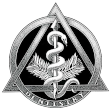The American Dental Association advises that flossing your teeth thoroughly should be done at least once a day, but more is better. Some people think that flossing more often can result in damage to the gums, this in not so. Over vigorous or incorrect flossing is one of the most common causes of damage to the gum tissues.
What is flossing?
Dental floss is made of either a bundle of thin nylon filaments or a plastic (Teflon or polyethylene) or a silk ribbon used to remove food and dental plaque from teeth. The floss is gently inserted between the teeth and scraped along the teeth sides, especially close to the gums. Dental floss may be flavored or unflavored, and waxed or unwaxed. An alternative tool to achieve the same effect is the interdental brush. The interdental brush is more helpful in areas where the gums have receded in between the teeth. There are two common methods of flossing, the spool method and the circle or loop method. Control of the floss and ease of handling can be seen in both methods. Flossing the teeth can be a bit complex, so we recommend that children under the age of 10 have a parent help them with this daily task. Once they develop adequate dexterity they can do this on their own. Younger children whose teeth still exhibit spaces where there is no contact between adjacent teeth will not require flossing.
Here are the two methods for flossing:
(A) The spool method
This method is best suited for teenagers and adults who have acquired the necessary coordination required to use floss. When using this method, a piece of floss approximately 18 inches in length is used. The bulk of the floss is lightly wound around the middle finger. Space should be left between wraps to avoid impairing circulation to the fingers. The rest of the floss is similarly wound around the same finger of the opposite hand. This finger can wind, or “take up”, the floss as it becomes soiled or frayed to permit access to an unused portion. The last three fingers are clenched and the hands are moved apart, pulling the floss taut, thus leaving the thumb and index finder of each hand free. The floss is then secured with the index finger and thumb of each hand by grasping a section three quarters to 1 inch long between the hands.
(B) The loop or circle method
This method is best suited for children as well as adults with less nimble hands or physical limitations. For this method, the ends of an 18 inch piece of floss are tied in a knot. All of the fingers, but not the thumbs of the two hands are placed close to one another within the loop. Whether using the spool or loop method of flossing, the same basic procedures are followed. The thumb and index finger of each hand are used in various combinations to guide the floss between the teeth with a seesaw motion at the contact point. This motion flattens the floss, making it possible to ease through the contact point and prevent snapping it through, thus avoiding trauma to the gums in between the teeth. Once past the contact point the floss is adapted to each approximating surface by creating a C-shape. The floss is then directed downwards towards the gum line and back to the contact area (up and down against the side of the tooth) several times or until the tooth surface is clean. The procedure is then repeated on the adjacent tooth in the proximal area, using care to prevent damage to the gums in between while readapting to the adjacent tooth. A clean, unused portion should be used for each area between the teeth.
In general, flossing is best performed by cleaning each tooth in succession, including the back surface of the last tooth in each quadrant. Incorrect flossing can often be detected through observation of the gums and the technique. Some of the signs suggesting incorrect use include cuts to the gums, bleeding gums, indentation on the soft tissues of the mouth and wear on tooth surfaces at the gum line. If you have any questions about the proper way to floss, be sure to ask your dental hygienist at your next dental visit.




